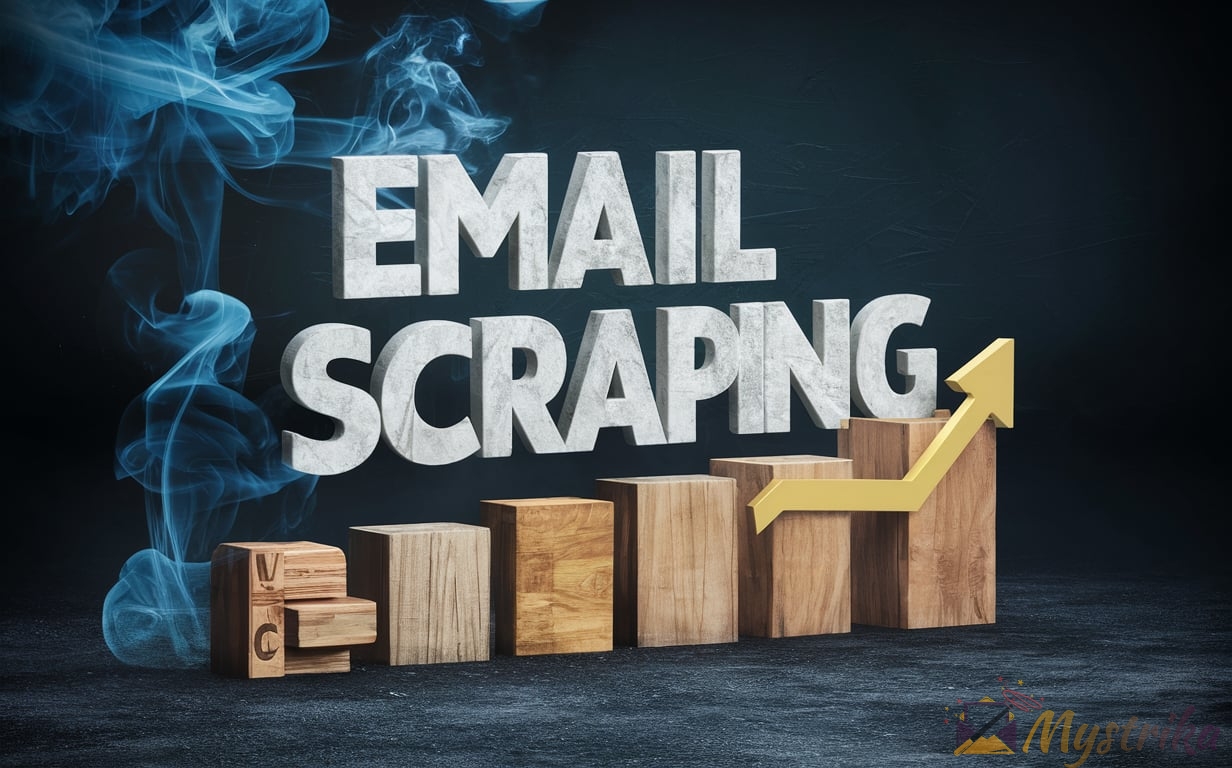Email scraping is transforming lead generation. Learn how to harness automated tools to harvest targeted inboxes from the web and supercharge your outreach.
Email scraping, also known as email harvesting, refers to the process of extracting and collecting email addresses from different sources on the internet. Essentially, it involves using automated tools and techniques to gather a list of email IDs that can then be used for marketing and outreach purposes.
At its core, email scraping relies on specialized software bots and scripts that scour through websites and online platforms looking for email addresses. These “email scrapers” search through various elements of sites like contact pages, “About Us” sections, source codes, and more to identify and extract any email IDs they can find.
For instance, an email scraper may crawl through a corporate website to pull out email addresses it spots in the HTML body, metadata, or text content. Or it could browse through entire directories like Yelp to scrape listed business emails. Even social media sites like Twitter and LinkedIn are fair game for scrapers to harvest publicly available email information.
Why Email Scraping is Important for Businesses
In today’s digitally transformed landscape, businesses need to tap into online platforms to engage their audiences and drive growth. Email continues to be the top digital marketing channel – low-cost, high-impact, and integral to the sales funnel.
But the biggest bottleneck is acquiring high-quality email lists and contacts to reach out to. Manual outreach doesn’t scale and generic list-building tactics have low conversion.
This is where email scraping comes in – an automated solution to generate targeted, personalized lead lists that can take your marketing and sales to the next level. Let’s explore the key benefits of email scraping for various business functions:
Lead Generation
The top challenge for lead generation is finding contacts at your ideal customer profiles (ICPs). Email scraping lets you target specific companies or personas and extract relevant decision-maker emails in bulk.
For instance, identify your ICPs – say, Fintech startups in San Francisco raising Series A funding. Feed these keywords into a search engine scraper to harvest associated emails like founders, VPs, key employees, etc.
Such targeted B2B lead lists built via email scraping convert at 5-10X higher rates than generic store-bought lists. The time and costs savings are massive when you automate lead prospecting.
Email Marketing
Email marketing remains the highest ROI digital channel with $42 in returns for every $1 spent. But email campaigns need constant topping up of fresh subscriber lists.
Here email scraping helps create customized audience segments to target – like scraping emails of Instagram followers in the yoga niche for your yoga studio. You can then deliver hyper-personalized email campaigns.
Scraping also provides superior email hygiene, removing invalid and spam-trap emails that undermine deliverability. The result – your emails reach more inboxes and drive higher engagement.
Sales Prospecting
Nothing beats direct outreach for converting prospects. But sales development teams struggle to build new pipeline and meet outreach quotas.
Automated email scraping fixes this by generating lead lists at scale. Simply scrape competitors’ followers, referrals, lookalikes, and more to build targeted new prospect pools.
Sales reps also save hours of manual research for prospects’ contact information. Scrapers extract key prospect intel like role, bio, interests etc. enabling personalized cold outreach.
Retargeting
You can leverage email scraping to retarget previous leads or customers who have gone cold. Identify such personas and scrape their contacts from the open web.
For example, scrape emails of past webinar registrants if they downloaded an asset but did not convert. Outreach reminds them of your brand and nudges them down the funnel.
Scraped lists are great for limited-time winback offers or re-engagement campaigns to resurrect stale leads.
Competitor Research
Scraping your competitors’ followers and site visitors gives unique competitive intelligence. You gain insights into their audience demographics, engagement metrics, pain points, and more.
These competitor lookalike audiences are prime targets for your messaging and offerings. Steal their customers by meeting their needs better!
Custom Audiences
Scraped email lists let you build Custom Audiences on Facebook, LinkedIn, Twitter etc. Then target your ads to these hyper-targeted segments for 2-3X better conversion rates and lower costs.
This tactic works very well when combined with lookalike modeling – first scrape competitor followers, then use them as the source to generate expanded Custom Audiences.
Scraping best practices like ethics, privacy, and compliance are vital however. Use trusted tools, prioritize public sources, and follow platform terms to avoid any issues.
Done right, email scraping drives productivity, efficiencies and breakthrough growth not achievable via manual prospecting. The automated era is here and email scraping powers it.
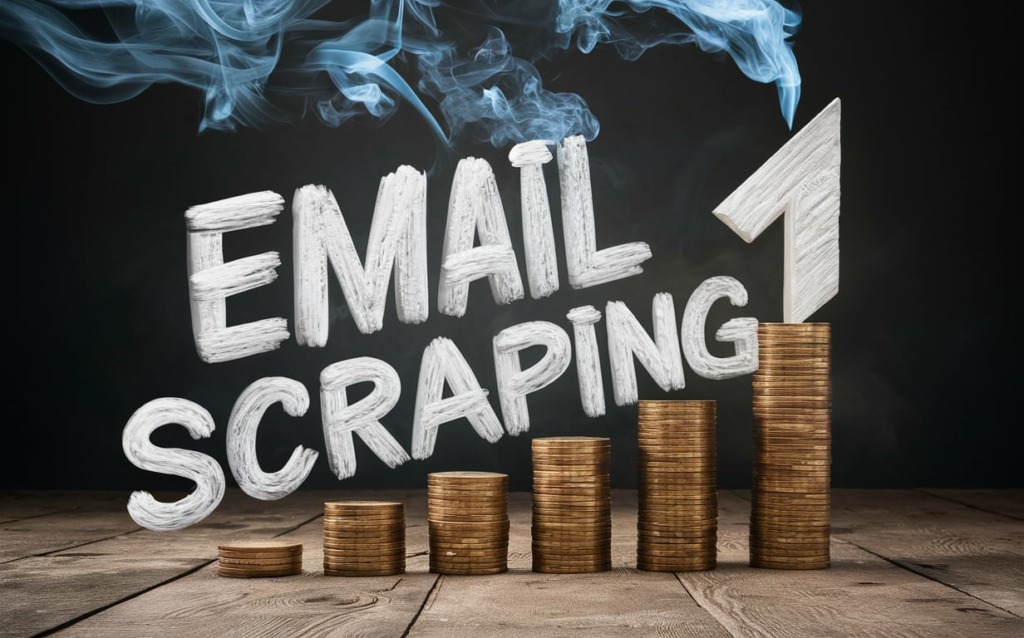
Main Methods of Email Scraping
When it comes to actually extracting emails at scale, businesses have several options based on their use case, tech stack, budgets, and more. The main methods of email scraping available are:
- Web Scraping Tools and Browser Extensions
- Pay-Per-Use Scraping Services
- Software-as-a-Service (SaaS) Scraping Tools
- Building Your Own Email Scraper
Let’s explore each approach in detail:
Web Scraping Tools and Browser Extensions
Web scraping tools are scripts and programs built specifically for harvesting data from websites. There are both open-source and commercial options available. Most work by crawling sites, analyzing page content, and extracting matching data.
Some popular standalone web scraping tools include:
- Import.io – Drag-and-drop web scraping with a user-friendly UI. Integrates with over 500 apps via Zapier. Pricing from $99/month.
- ParseHub – Visually build scrapers without coding on a robust cloud platform. Free plan available with 100 page credits per month.
- Scraper API – Scalable API-based web scraping infrastructure starting at $149/month.
- Octoparse – Desktop scraping tool for Windows and Mac with a free trial. Paid plans from $10/month.
- CloudScrape – Managed scraping infrastructure with proxy rotation, starting at $300/month.
- UiPath – Powerful RPA tool with web scraping capabilities, starting at $500/month.
For more occasional needs, browser extensions provide a quick way to scrape emails while browsing sites. Popular email harvesting extensions include:
- Email Extractor – Scrapes emails from any webpage with one click. Works across browsers.
- Email Grabber – Lightning fast email scraping Chrome extension. Grabs all emails on a site.
- Email Extractor Pro – Browser scraper for Gmail, Twitter, LinkedIn and more.
- EmailPicker – Email finding and verification built into Chrome.
So in summary, standalone web scraping tools or simple browser extensions provide a quick way to harvest emails from websites as needed. But they lack automation and extensive sources beyond basic crawling.
Pay-Per-Use Scraping Services
For more powerful scraping capabilities, many businesses turn to commercial on-demand extraction APIs. Top pay-per-use scraping services include:
- BrightData – Leading scraping API starting at $500/month for 50K credits. Proxy rotators provide unblocks.
- ScrapingBee – Scalable API and proxies to scrape sites, SERPs, and social media. Plans from $99/month.
- ScraperAPI – Web scraping API with libraries in Python, Node.js, C# etc. 10K free credits per month.
- ProxyCrawl – Rotating residential proxies and JavaScript rendering for scraping. $97/month basic plan.
- ScraperBox – Scalable SERP, web, and social media scraping API. 1M free credits per month.
These scraping services offer significant advantages like:
- Large proxy networks – To avoid blocks and scraping bans.
- Robust infrastructure – To scrape at scale fast and reliably.
- Geotargeting – For location-specific, localized scraping.
- Powerful crawlers – That can render JavaScript and extract data quickly.
- Integrations – With workflows like Zapier to stream results.
- Data expertise – Advanced parsing, OCR and training algorithms.
The pricing model is usually pay-per-use, based on the number of credits consumed. For example, 1 credit may equal 1 scraped page, 100 search results, or 10 social media profiles. Packages with monthly credits ranging from a few thousand to millions are available.
These commercial APIs provide the most powerful scraping capabilities, albeit for a steeper price tag. Still, the value derived often outweighs the costs for high-volume lead generation use cases.
Software-as-a-Service (SaaS) Scraping Tools
SaaS email scraping tools provide an all-in-one solution combining automation, integrations, analytics, and more. Top platforms in this space include:
- Prospectss – All-in-one lead gen and outreach toolkit. Email scraping, verification, Chrome extensions, and more. Plans from $49/month.
- LeadFuze – Lead scraping tool for LinkedIn and web. Dedicated account manager. Paid plans from $197/month.
- Skrapp – End-to-end solution with web scraping, outreach and automation. $399/month minimum.
- Lemlist – AI-driven cold email and outbound platform starting at $47/month.
- Mailshake – Sales engagement software with web scraping and emailing. From $29/month.
- Hunter.io – Email finder and verifier part of a sales platform, from $49/month.
- Apollo.io – All-in-one B2B data provider and outreach tool, from $249/month.
SaaS scraping tools provide major upsides like:
- Full business toolset – Combine scraping with outreach, automation, analytics etc. in one platform.
- Integration efficiency – Data flows seamlessly between connected modules.
- Centralized data – All prospect data and workflows in one dashboard.
- Ongoing value – Adaptive tools that evolve with business needs.
- White-glove support – End-to-end onboarding and dedicated success resources.
The monthly costs of SaaS solutions are higher than standalone tools. But the return on investment is maximized through synergies between tightly integrated capabilities.
Building Your Own Email Scraper
Tech-savvy users may opt to build their own customized web scraping bots coded from the ground up. The main approaches are:
- Custom Python scraper – Python has numerous scraping libraries like BeautifulSoup, Scrapy, Selenium etc.
- Custom Java scraper – Java scraping libraries include jSoup, HtmlUnit, WebHarvest etc.
- Custom JavaScript scraper – Utilizing Node.js and libraries like puppeteer or cheerio.
- Other languages – Libraries exist for Ruby, PHP, C# etc.
The steps for creating a homegrown scraper include:
- Identify data sources and requirements.
- Select a suitable programming language and libraries.
- Build parsers to pinpoint and extract email addresses.
- Create crawling logic to iteratively scrape websites.
- Enable proxies, headers, delays, captchas etc. to avoid blocks.
- Build a robust infrastructure for scale.
- Connect to email tools, CRMs etc. to export results.
Building an in-house scraper gives ultimate customization flexibility aligned to your technical strengths. But it requires significant development efforts and maintenance. External scraping services often provide superior results faster and cheaper.
In summary, businesses have a range of options when it comes to email scraping methods, spanning standalone tools, pay-per-use APIs, SaaS platforms, and in-house builds. The best approach depends on budget, use case, technical expertise and goals. But specialized scraping services often give the best bang for buck today. Their constantly evolving technology and expertise outpace most in-house builds.
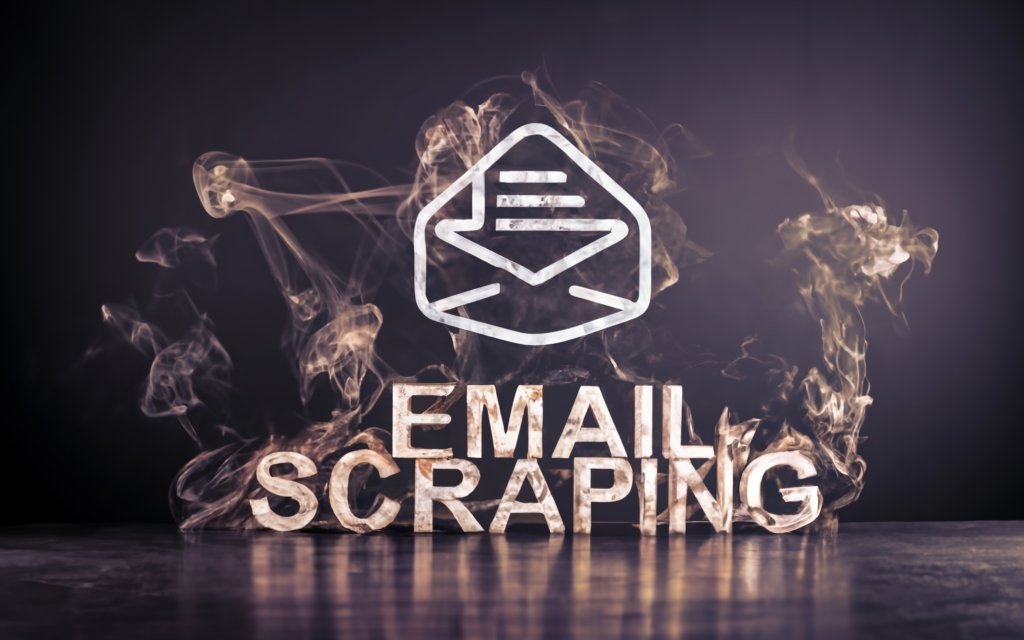
Key Scraping Techniques and Concepts
Beyond having the right scraping tools, successfully harvesting quality emails also requires implementing proven strategies and techniques. Here are some of the most important concepts for effective email scraping:
URL-Based Email Scraping
This technique involves taking a root URL or landing page as the starting point, then crawling through all the associated pages to extract emails. For example:
- Provide the homepage URL of a corporate website as input.
- The scraper extracts any emails it finds on the homepage.
- It then uses sitemaps, internal links etc. to recursively traverse all pages on the site.
- Emails are extracted from each page visited and compiled into a master list.
Pros:
- Scrapes a full website exhaustively page-by-page.
- Useful for targeting a specific brand’s universe of employees.
Cons:
- Crawling large sites with millions of pages is challenging.
- No guarantee pages will contain emails, reducing yield.
Keyword-Based Email Scraping
Here, relevant keyword searches are used to identify public sources likely to contain email IDs. The top techniques are:
Search engine scraping – The scraper programmatically runs keyword searches on Google, Bing etc., then extracts emails from the search engine results pages (SERPs).
Directory scraping – Feeding keywords into platforms like YellowPages, CrunchBase, and scraping the result listings for business emails.
Document scraping – Searching for public PDFs, slideshares, reports containing target keywords and scraping emails within them.
Pros:
- Expands beyond a single website’s scope to a wider universe.
- keyword targeting ensures relevancy of scraped emails.
Cons:
- Requires carefully crafted keywords tailored to the campaign.
- Email volumes depend heavily on keyword strategy.
Social Media Scraping
Public social media profiles offer a trove of contact information for scraping. Common sources include:
- Twitter bios and tweets for business emails.
- LinkedIn member profiles for personal and work emails.
- Facebook, Instagram, YouTube for publicly shared email buttons/links.
- Reddit threads, Quora posts containing emails in user comments.
Pros:
- Targets real individuals with public social media presence.
- Emails often associated with additional profile data like interests, employer etc.
Cons:
- Contact info not always available requiring profile visits at scale.
- Personal vs business email discernment can be challenging.
Bulk Email List Scraping & Verification
For max ROI, scraped emails should be:
- De-duped to remove multiple versions of the same address.
- Verified for syntax, deliverability, and existence.
- Cleaned to eliminate invalid formats, catchalls, spam traps.
- Enriched with missing data like names, companies, titles.
This process ensures only accurate, usable emails are retained for outreach.
Pros:
- Significantly improves email hygiene and campaign ROI.
- Reduces spam complaints and blocks.
Cons:
- Additional costs and time for verification and cleaning.
- Some good emails may also be eliminated.
Scraping Best Practices
There are several strategies scrapers should implement to boost results and avoid issues:
- Use proxies – Rotate different IP addresses to avoid site blocks.
- Enable captchas – Bypass captcha protections to access data.
- Customize user agents – Spoof browsers via diverse user agent strings.
- Implement delays – Adding pauses between page visits appears human.
- Prioritize public sites – Stick to sources meant for public viewers.
- Respect robots.txt – Avoid pages that block scraping access.
- Check terms of use – Comply with platforms’ publishing and data policies.
- Use APIs when available – APIs give authorized structured access to walled gardens.
- When in doubt, opt out – Err on the side of caution for public vs private sources.
Pros:
- Circumvents technical barriers while respecting sites’ access policies.
- Provides necessary cover to operate legally and avoid blocks.
Cons:
- Overly aggressive scraping risks countermeasures and lawsuits.
- Excessive delays slow overall scraping throughput and productivity.
In summary, a variety of scraping approaches can be combined to build comprehensive, targeted email lists. Best practices balance speed and ethics to maximize access while protecting reputations. With the right strategies, your business can efficiently scrape quality leads at scale from the web’s vast public sources.
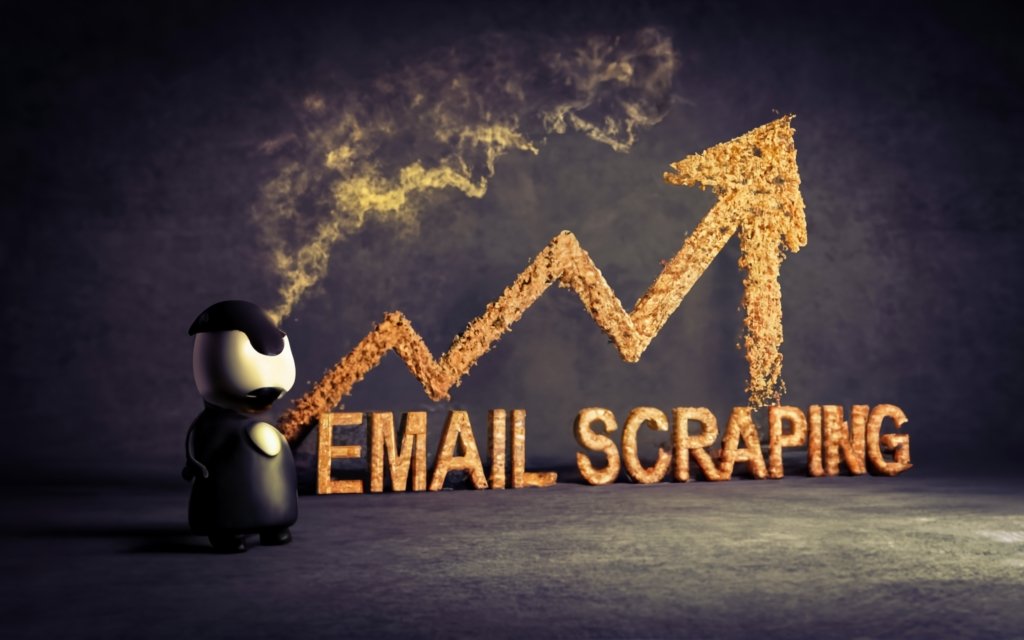
Email Scraping Tools Comparison
With the myriad scraping tools available today, how do businesses evaluate and select the right solution for their needs? Here’s an objective head-to-head comparison of top email scraping services across crucial factors:
Feature Comparison
| Tool | Key Features | Email Verification | Bulk Uploading | Export Integrations | Analytics Dashboard |
|---|---|---|---|---|---|
| Prospectss | Chrome extensions, automation, outreach tools | ✅ | ✅ | CRMs, Email Tools | ✅ |
| BrightData | Powerful commercial scraping API | ✅ | ✅ | Zapier, Integromat | Limited |
| LeadFuze | LinkedIn & web scraper, dedicated reps | ✅ | ✅ | CSV, Email Tools | ✅ |
| Phantombuster | Visual scraper builder, automation | ✅ | ✅ | CSV, Google Sheets | ✅ |
| ScrapeHero | Web scraping API, proxies, captchas | ✅ | ✅ | Zapier, Python, Email Tools | Limited |
| Skrapp | End-to-end scraping & outreach | Limited | ✅ | CSV, Email Tools | ✅ |
Accuracy and Output Quality
| Tool | Scraping Accuracy | Invalid Email % | Spam Traps Detected | Email Enrichment |
|---|---|---|---|---|
| Prospectss | Very High | <2% | Yes | Names, Companies, Titles |
| BrightData | High | ~5% | Yes | Limited |
| LeadFuze | Medium | ~10% | No | Titles |
| Phantombuster | Medium | ~10% | No | Minimal |
| ScrapeHero | Low | >15% | No | None |
| Skrapp | Medium | ~8% | Yes | None |
Pricing and Plans
| Tool | Free Trial | Pricing Starts At | Payment Model |
|---|---|---|---|
| Prospectss | 3 Days | $49/month | Monthly Subscription |
| BrightData | 7 Days | $500/month | Pay-per-credits |
| LeadFuze | 14 Days | $197/month | Annual Subscription |
| Phantombuster | 14 Days | $29/month | Monthly Subscription |
| ScrapeHero | Custom Demo | $149/month | Pay-per-credits |
| Skrapp | Custom Demo | $399/month | Custom Quotes |
Support and Ease of Use
| Tool | Interface | Documentation | Onboarding | Support Channels |
|---|---|---|---|---|
| Prospectss | Intuitive, Modern | FAQs, Blog, Videos | Demos, Training | Live Chat, Email, Phone |
| BrightData | Developer Dashboard | Documentation Portal | Custom Training | Phone, Support Portal |
| LeadFuze | Simple Dashboard | Knowledge Base | White-glove via Account Manager | Email, Phone |
| Phantombuster | Visual Builder | Tutorials, Forum | Quickstarts, Webinars | In-app Chat, Email |
| ScrapeHero | Developer Console | API Docs, Forum | Custom Integration Support | Priority Email |
| Skrapp | Cluttered | Tutorials, Blog | Custom Implementation | Phone, Email |
Email Scraping Laws and Ethics
As email scraping becomes a mainstream lead gen technique, questions around its legality and ethics often arise. While there are grey areas, businesses can avoid issues by understanding and complying with a few common sense guidelines.
Legality of Email Scraping
In the US, email addresses themselves are not legally protected or confidential information. Web scraping also does not explicitly violate federal computer hacking laws as long as it accesses only publicly available data.
However, scraping methods that bypass security measures, breach terms of use, or facilitate spamming may incur violations. Individual sites also have latitude to pursue civil lawsuits if scraping activity directly damages them.
In the EU, the legal standing is more restrictive under GDPR data privacy regulations. Scraping is only compliant if source websites explicitly allow it and users have given consent. Still, addresses found through normal public Google searches would pass muster.
The harshest restrictions exist in countries like Canada and Australia that prohibit the use of software bots to collect emails. Always review regional and local laws before deploying email scraping activities globally. When in doubt, seek legal counsel.
Ethical Best Practices for Email Scraping
Regardless of legal technicalities, businesses should follow a universal code of ethics:
- Prioritize implied consent sources like public directories, social media, corporate websites etc. Avoid seeking emails behind logins or scraping private account inboxes.
- Obey robots.txt restrictions and avoid sites that explicitly block scraping.
- Use professional scraping services that implement best practices for etiquette and compliance. Don’t attempt unethical DIY hacks.
- Collect only data you plan to use for legitimate marketing and sales purposes. Scraping just to resell data for profit only is unethical.
- Confirm opt-ins on your website before adding scraped emails to active marketing lists. Don’t spam or harass unwilling recipients.
- Convey transparency by including physical addresses, contact info, unsubscribe links etc. in emails. Don’t hide your identity.
- Honor opt-out requests promptly and maintain rigorous do-not-contact lists excluded from campaigns.
- Implement security controls like data encryption to protect harvested lead data and privacy.
- Discard unqualified leads that show no interest or interaction with your company after initial outreach.
By integrating these responsible scraping guidelines, you ensure ethical, mutually beneficial exchange of value with contacts. Transparency, choice, and restraint protect your brand reputation as well as recipient preferences.
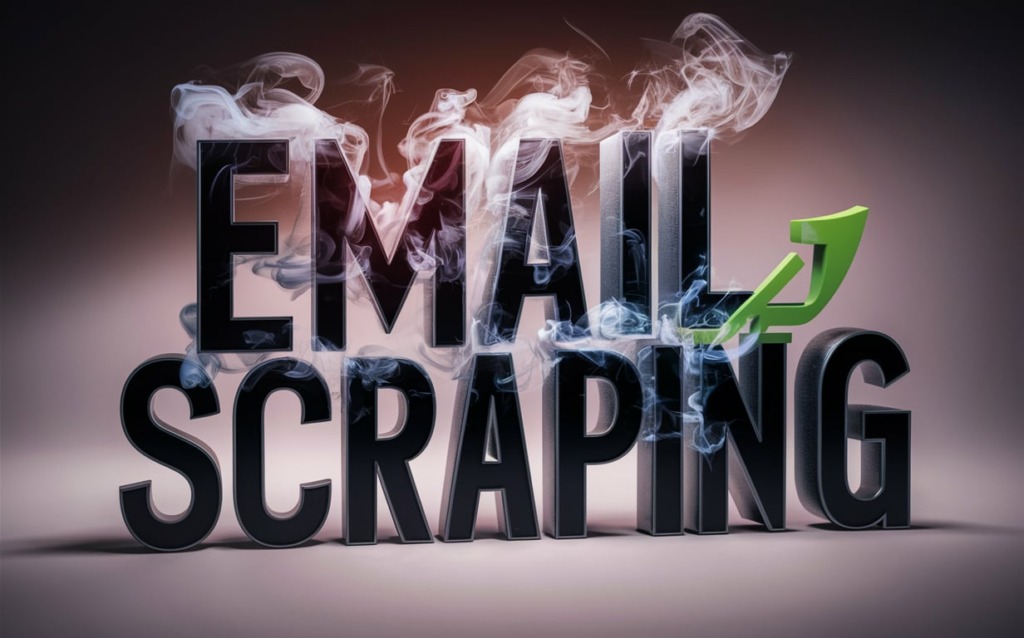
Email Scraping Tips and Strategies
Let’s move beyond tools to some actionable tips and strategies to maximize your email scraping results:
Use Proxies and Rotation
To avoid getting blocked while scraping, you need to mask your activities and appear human. The best approach is using proxy servers and rotating your IP addresses.
Residential proxies – These are IP addresses of real homes and people. They mimic genuine user traffic and are great for scraping. Paid proxy services like BrightData provide access to millions of residential IPs to rotate through.
Datacenter proxies – These originate from data centers and are faster but easier to detect as scrapers. Still useful in moderation.
Rotate IPs frequently – Each scrape request should use a different proxy IP. This prevents target sites from recognizing your address and blocking it.
Vary user agents – Along with IPs, rotate different browser user agent strings to vary fingerprints. Don’t let patterns emerge.
Install browser extensions – Tools like Proxy Switcher automatically rotate IPs and user agents for seamless scraping experience.
Use proxy rotation APIs – Services like BrightData, ScrapeHero, etc. natively integrate proxy cycling into their programs for optimum results.
Focus on Publicly Available Data
The best way to avoid legalities is to only scrape publicly viewable websites and platforms meant for open indexing and sharing of contact information.
Google search – Keyword scraping of Google yields emails people intentionally share openly.
Business directories – Yelp, YellowPages, etc. list business emails for public outreach.
Social media – Twitter, LinkedIn, Facebook profiles with public email buttons.
Corporate sites – About Us, Contact Us, Media pages with press email IDs.
Industry forums – Spokesperson/sales emails shared in discussions.
Document sharing – Public reports, slideshares containing contributor emails.
Job boards – Recruiter outreach emails on platforms like LinkedIn, Monster.
Essentially, stick to sources with an implied consent for contact. Avoid non-public platforms requiring logins or authentication.
Verify Scraped Emails
Scraped email lists always contain some percentage of:
- Invalid formats – common typos like missing @ symbols, domains etc.
- Catch-alls – info@, admin@ type non-personal emails.
- Spam traps – decoy emails used to identify spammers when reached out.
- Outdated addresses – of people who left companies years ago.
Reaching outdated or invalid inboxes can negatively impact sender reputation and deliverability.
That’s why it’s crucial to verify the accuracy of scraped emails before doing outreach. There are two main techniques:
- Email verification APIs – Services like NeverBounce, ZeroBounce, Proofy etc. validate syntactical structure, deliverability, existence and more. Just integrate and clean email lists in one flow.
- Confirmation workflows – Send confirmation opt-in emails and exclude unverified ones from active outreach. This ensures verification before adding emails to marketing lists.
Personalize Outreach Campaigns
Generic spammy emailing of scraped lists gives terrible ROI. The key is personalizing outreach using additional profile data that scrapers extract – like name, company, title, interests etc.
Personalization tactics include:
- Segmenting emails by industry, seniority, tech-stack etc. for targeted messaging.
- Subject line name personalization – “Hi {First Name}, X Tip for Y Role”.
- Body content personalization – “At Company ABC, you use Tech 123, so here’s…”
- Dynamic content blocks – Based on industry, interest tags – “As a Retail Buyer…”
- Personalized CTAs – “Get Your Free Ebook for Media Planners”
When outreach is tailored and demonstrates familiarity, response rates can increase by 3-5X compared to generic blasting.
Follow Email Marketing Best Practices
Scraped email outreach straddles a fine line between valuable promotion and spam annoyance. To avoid damaging your brand or blocking, always follow ethical email marketing practices:
Easy unsubscribes – Provide visible preference centers and one-click opt-outs.
Meaningful content – Offer genuine value like exclusives, insights, discounts. Don’t make it all self-promo.
Responsible frequency – Spread out emails to avoid perception of spamming.
Relevant targeting – Only reach out if there is logical interest overlap. Don’t randomly spray emails.
Physical address – Include a real contact address to build sender legitimacy.
CAN-SPAM compliance – Comply with anti-spam law by ensuring opt-in consent, no deception.
Monitor metrics – Track unsubscribe rates, spam complaints, blocked IPs. Tweak strategies if needed.
Being a responsible email marketer ensures your scraping and outreach efforts give long-term benefits, not short-term gains at the expense of reputation and domain authority. It provides recipients value, not disruption.
In closing, small optimizations across proxies, verification, personalization and compliance compound to give outsized improvements in your email scraping and outbound efforts. Combine technology with discipline to growth hack lead gen while also nurturing the human element.
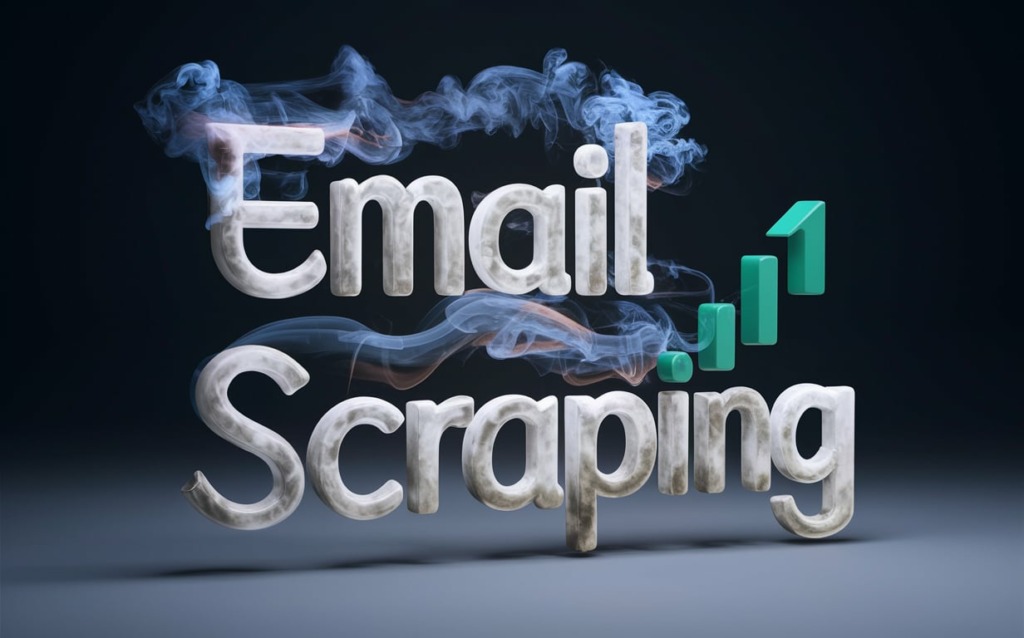
Key Takeaways
- Email scraping automates the extraction of email addresses from public online sources, generating quality leads faster.
- Scraping tools like Prospectss provide end-to-end solutions covering extraction, verification, analytics, and outreach.
- Key scraping techniques include URL-based scraping, keyword searches, social media harvesting, and bulk list processing.
- Top services compete on accuracy, integrations, support, and pricing. Prospectss balances power and ease of use.
- Legally, scraping public data is permissible in most regions but always respect site terms and access policies.
- For results and ethics, use proxies, focus on public sites, verify emails, personalize outreach, and monitor compliance.
- With the right strategies, email scraping supercharges lead generation, sales, and marketing by tapping digital data at scale.
- Blend scrapping technology with personalization and compliance to maximize value creation for your business and customers.
Frequently Asked Questions
What is email scraping?
Email scraping refers to using automated tools and scripts to extract email addresses from public online sources like websites, directories, social media, and documents.
What are the main benefits of email scraping?
It generates targeted, high-quality B2B and B2C leads at scale to drive sales, marketing campaigns, and business growth. It also saves huge amounts of manual research time.
What methods exist for email scraping?
The main methods are web scraping tools, pay-per-use scraping APIs, all-in-one SaaS platforms, and building your own customized scraper.
What are some top email scraping tools?
Leading solutions include Prospectss, BrightData, LeadFuze, Phantombuster, ScrapeHero, Skrapp, and more. They vary in features, accuracy, support, and pricing.
Is email scraping legal?
In most countries, scraping publicly viewable data is legal. However, hacking into private sources or breaching a site’s terms of use may violate laws or regulations.
How can I maximize my email scraping results?
Use proxies, focus on public sites, verify and enrich emails, personalize outreach, monitor metrics, automate workflows, and scale efforts gradually.
How do I avoid getting blocked while scraping?
Rotate different residential and datacenter IP proxies and user agents frequently so you appear more human than bot to target sites.
Why should I verify scraped email lists?
To eliminate invalid, outdated, and role-based emails that damage deliverability when messaged. Accuracy is critical.
How does personalization improve scraped email outreach?
Personalized messaging with names, companies, interests etc. has 3-5X higher response rates than generic spam blasting.
What precautions should I take to email scrape ethically?
Respect opt-outs, be transparent with contact info, comply with anti-spam laws, secure data privacy, and avoid deceptive practices.
How can I scale my email scraping efforts over time?
Start small, master techniques, then expand sources, tools, automation and budgets incrementally based on data-driven insights.

